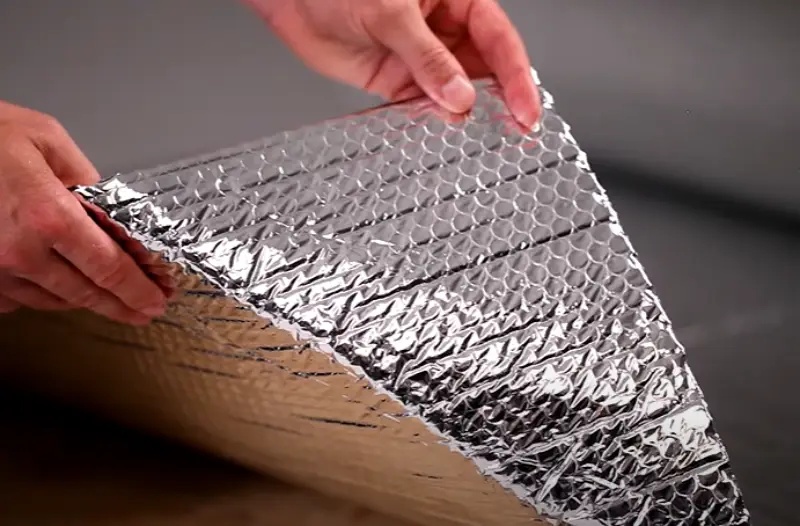Advantages of Using Radiant Barrier in Your Home
Radiant barrier, a type of insulation that blocks radiant heat transfer, offers several advantages when used in your home. One of the primary benefits is increased energy efficiency. By preventing radiant heat from entering your living space during hot summer months, radiant barrier reduces the need for air conditioning, ultimately saving you money on energy bills. Additionally, in colder seasons, it helps to retain warmth, reducing the reliance on heating systems and saving further on energy costs.
Another advantage of using radiant barrier in your home is improved comfort. By reflecting radiant heat away from your living space, it helps to maintain a consistent temperature indoors. This means that during hot weather, your home stays cooler for longer, while during colder weather, it retains heat better, creating a cozy and comfortable environment for you and your family. Furthermore, radiant barrier can also help to reduce hotspots and temperature variations in different areas of your home, ensuring a more evenly regulated temperature throughout.
How Radiant Barrier Works to Improve Comfort
One of the ways radiant barrier works to improve comfort in your home is by reflecting heat away from your living space. When the sun’s rays hit your roof, the heat is absorbed and transferred to the attic. Without a radiant barrier, this heat can radiate downward, causing your home to become uncomfortably warm. However, with the installation of a radiant barrier, the heat is reflected back towards the roof, preventing it from entering your living area. This helps to keep your home cooler and more comfortable, especially during hot summer months.
In addition to reflecting heat, radiant barrier also works by reducing heat transfer through conduction and convection. Conduction occurs when heat moves through solid materials, such as when the hot roof material transfers heat to the attic insulation. By installing a radiant barrier, it acts as a barrier between the hot roof and the cooler attic space, minimizing conduction of heat. Similarly, convection involves the movement of heat through air, and with a radiant barrier in place, it restricts the movement of hot air from the attic into your living space, helping to maintain a comfortable temperature throughout your home.
Understanding the Science Behind Radiant Barrier

Radiant barrier is a type of insulation material commonly used in homes to prevent the transfer of radiant heat. It works by reflecting radiant heat instead of absorbing it, keeping the interior of the house cooler in the summer and warmer in the winter. The science behind radiant barrier is based on the principle of thermal radiation. When energy from the sun hits the roof of a house, it is absorbed and then re-emitted as radiant heat. Without a radiant barrier, this heat would penetrate the roof and transfer into the living space, leading to increased indoor temperatures. However, with the addition of a radiant barrier, the heat is reflected back towards the outside, preventing it from entering the home.
The effectiveness of a radiant barrier is determined by its emissivity and reflectivity. Emissivity refers to the ability of a material to emit radiant energy, while reflectivity is the measure of how well a material reflects radiant heat. Ideally, a radiant barrier should have a low emissivity to prevent the absorption of radiant heat and a high reflectivity to ensure maximum reflection. Different types of radiant barriers achieve these properties through various manufacturing processes, such as applying a metallic coating or incorporating reflective films. Understanding the science behind radiant barrier allows homeowners to make informed decisions when choosing the right type of radiant barrier for their homes.
The Key Benefits of Installing Radiant Barrier
Radiant barriers offer several key benefits for homeowners who choose to install them. First and foremost, these barriers help to reduce the transfer of heat into the living space from the sun’s rays. By reflecting the majority of the sun’s radiant energy away from the home, radiant barriers can significantly reduce indoor temperatures, especially in hot climates. This means less reliance on air conditioning systems to keep the home cool, leading to potential energy savings and reduced utility bills.
Additionally, installing a radiant barrier can help to improve overall comfort levels in the home. By effectively blocking the transfer of radiant heat, these barriers can help to create a more consistent and stable indoor temperature. This can prevent hot spots and cold drafts, ensuring that every room of the house is comfortable and enjoyable to spend time in. Whether it’s during the scorching summer months or the chilly winter season, a radiant barrier can help to maintain a comfortable living environment throughout the year.
Common Misconceptions about Radiant Barrier
Many homeowners have misconceptions about radiant barrier and its capabilities. One common misconception is that radiant barrier only works in warm climates. However, this is not true. While radiant barrier is indeed more effective in hot climates, it can still provide benefits in cooler regions. The barrier works by reflecting radiant heat, which is present even in cold weather. Therefore, installing a radiant barrier can help improve energy efficiency and reduce heating costs, regardless of the climate.
Another misconception is that radiant barrier eliminates the need for insulation. This is not entirely accurate. While radiant barrier can reflect a significant amount of heat, it is not designed to provide insulation against conductive or convective heat transfer. Insulation and radiant barrier work hand in hand to enhance energy efficiency in homes. By installing both insulation and radiant barrier, homeowners can create a more effective thermal barrier that helps keep their homes comfortable and saves energy.
Choosing the Right Radiant Barrier for Your Home
When it comes to choosing the right radiant barrier for your home, there are a few important factors to consider. Firstly, you’ll want to take into account the climate in which you reside. Different radiant barrier materials may perform better in certain climates, so it’s worthwhile to do some research and consult with professionals to determine the most suitable option for your specific needs. Additionally, consider the installation process and whether you are comfortable with a DIY approach or if you would prefer to hire professionals for the job. Proper installation is crucial for maximum effectiveness, so be sure to weigh your options accordingly.
Another important aspect to consider when selecting a radiant barrier is its reflectivity and emissivity ratings. The reflectivity rating indicates how well the material reflects radiant heat, while the emissivity rating measures the material’s ability to radiate heat. Opting for a radiant barrier with high reflectivity and low emissivity can help to effectively reduce heat transfer, thus improving energy efficiency and keeping your home more comfortable. Additionally, look for products that have been certified by recognized organizations, as this can provide peace of mind knowing that the radiant barrier meets certain quality standards. By carefully considering these factors, you can choose the right radiant barrier for your home and reap its many benefits.
